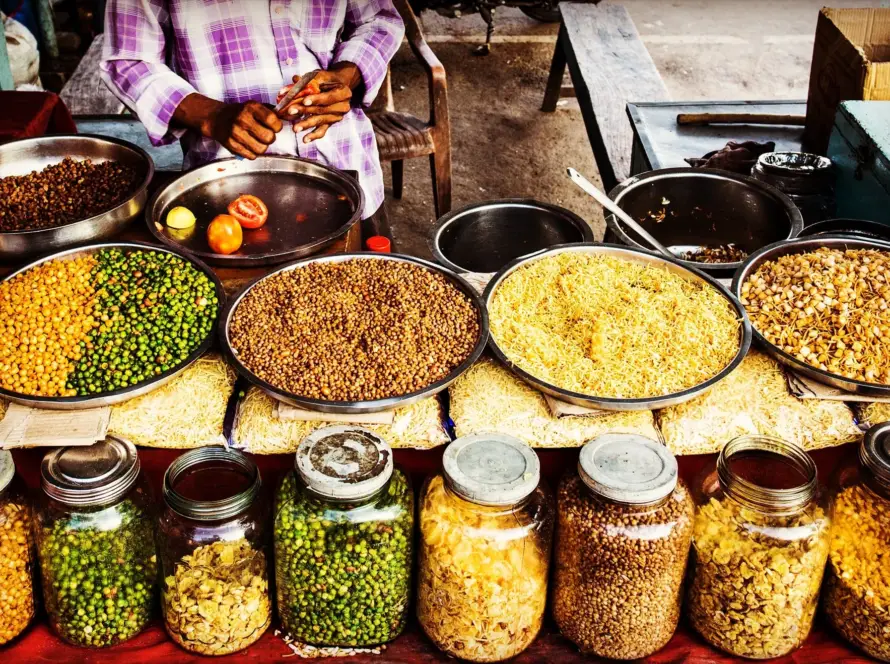Generated by Contentify AI
- Exploring Traditional Sports
- Evolution of Sports in India
- Impact of Globalization on Sports Culture
- Key Players in Indian Sports Industry

Key Takeaways
- Sports have always been an integral part of Indian culture, with a rich history dating back to ancient times.
- The present sports culture in India is witnessing a significant transformation with a growing emphasis on professional leagues and grassroots development.
- The rise of sports like cricket, kabaddi, and football has garnered immense popularity and support from the Indian population.
Exploring Traditional Sports
The landscape of the sports culture in India: past and present, reveals a rich tapestry of traditional sports that have been woven into the fabric of Indian society over centuries. Kabaddi, a team sport that requires no equipment and emphasizes strength and strategic team play, stands out as a significant part of this heritage. Originating from the Indian subcontinent, kabaddi has not only been a staple in rural communities but has also seen its popularity soar in urban settings in recent years, thanks to professional leagues. Kho-Kho, another ancient sport, underscores the importance of speed and agility, reflecting the values of teamwork and physical fitness ingrained in Indian culture.
Wrestling, known locally as Kushti, is another pillar of traditional Indian sports, with a history that dates back over 5,000 years. It’s more than just a sport; it’s a discipline that embodies strength, honor, and respect. Rural India, particularly in states like Haryana and Punjab, has produced numerous wrestlers who have gained international acclaim, showcasing the enduring legacy of traditional sports in shaping the sports culture in India: past and present.
Archery, too, has historical significance in India, with its roots deeply embedded in Indian mythology and medieval warfare. Today, it continues to be celebrated in cultural festivals and competitive events, highlighting the seamless blend of history and modernity in the sports culture of India.
These traditional sports are not only a reflection of India’s rich cultural heritage but also serve as a foundation for the evolving landscape of sports in the country. They underscore the continuity and change within the sports culture in India: past and present, creating a unique synergy between age-old traditions and contemporary sporting endeavors.
Evolution of Sports in India
The evolution of sports in India mirrors the country’s journey through time, from a land steeped in age-old traditions to a burgeoning global power. Historically, sports culture in India has been predominantly rooted in rural and community-based activities, with indigenous sports like kabaddi, kho-kho, and wrestling (kushti) playing pivotal roles in social and cultural gatherings. These sports, which require minimal equipment, have thrived on the principles of physical fitness, teamwork, and strategy, forming the bedrock of sports culture in India’s past.
As India marched towards independence and beyond, the landscape of its sports culture witnessed significant transformation. The colonial era introduced a number of Western sports to the subcontinent, including cricket, field hockey, and football, which quickly assimilated into the Indian ethos. Cricket, in particular, catapulted to unprecedented heights, becoming more than just a sport; it evolved into a quasi-religion, weaving itself into the national identity. This shift marked a pivotal moment in the evolution of sports culture in India, with cricket’s ascendancy bringing international recognition, fostering a sense of pride and unity among Indians.
The latter half of the 20th century and the dawn of the 21st century saw further evolution, characterized by India’s increasing participation in global sports. The nation’s economic liberalization in the 1990s opened up new avenues for investment in sports infrastructure, training, and talent development. This period also witnessed the rise of individual sports stars in fields like tennis, badminton, and wrestling, who have consistently performed on the world stage, further diversifying the sports culture in India from its past focus on team sports.
The introduction of professional leagues in football, hockey, badminton, and kabaddi over the past two decades signifies another major shift in India’s sports culture. Modeled after successful franchises in global sports, these leagues have revolutionized the commercial aspect of sports in India, providing athletes with platforms to showcase their talent, while also making sports a viable career option for the youth.
Today, the sports culture in India is a vibrant amalgamation of its rich heritage and contemporary global influences. While traditional sports continue to thrive, the country’s achievements in various international arenas signify a broader acceptance and integration of sports within the fabric of Indian society. This ongoing evolution reflects a dynamic and inclusive sports culture, one that honors its past while eagerly embracing the future.
Get Secure IT Solutions Services
Shakti Web Solutions is your one-stop destination for top-notch Website Design & Website Development solutions. We help you go digital and unlock your business potential.
Impact of Globalization on Sports Culture
The impact of globalization on the sports culture in India: past and present, has been profound and multifaceted, reshaping not only the types of sports popular in the country but also how these sports are consumed, promoted, and played. This sweeping change, propelled by advances in technology and the liberalization of the Indian economy, has facilitated the entry of international sports leagues, brands, and methodologies into the Indian market, thus altering the landscape of Indian sports culture significantly.
One of the most visible effects of globalization is the increased presence and popularity of football (soccer) leagues like the English Premier League (EPL) and La Liga among Indian audiences. Satellite television and the internet have made it possible for fans in India to follow these leagues with the same fervor as cricket, the nation’s most beloved sport. This has not only expanded the sports culture in India but has also inspired a generation of athletes to pursue careers in sports other than cricket, showcasing a diversification of interest and participation in sports at both amateur and professional levels.
Furthermore, the introduction of professional leagues within India, such as the Indian Super League (ISL) for football and the Pro Kabaddi League (PKL), has been a direct result of the global influence on the country’s sports paradigm. These leagues have adopted formats and operational models similar to those of successful international leagues, aiming to enhance the quality of the sport, attract investment, and increase fan engagement through a more structured and commercial approach. This has provided a significant boost to the sports culture in India, making it more inclusive and accessible.
Globalization has also led to improved sports infrastructure and training facilities in India. Collaboration with international sports franchises, access to foreign coaching methodologies, and exposure to international standards of play have contributed to elevating the performance of Indian athletes on the global stage. Athletes from sports such as badminton, wrestling, and boxing have gained international acclaim, highlighting the positive impact of globalization on nurturing talent and enhancing competitive standards.
The influence of global brands and sponsorships cannot be overlooked in the evolution of the sports culture in India: past and present. Global brands have played a crucial role in promoting sports beyond cricket, sponsoring events, and athletes across a range of sports. This influx of sponsorships has increased the commercial viability of various sports, enabling better funding for events, talent development programs, and sports education.
In summary, the impact of globalization on the sports culture in India has been transformative, making it more diverse, dynamic, and
Related articles
Key Players in Indian Sports Industry
The emergence and recognition of key players within the Indian sports industry have significantly contributed to shaping the sports culture in India, both historically and in the contemporary landscape. From traditional icons to modern-day heroes, these individuals and organizations have played pivotal roles in elevating the status of various sports in the nation, fostering a rich and diverse sports environment.
Historically, the sports culture in India was largely influenced by athletes who excelled in traditional sports such as wrestling, kabaddi, and field hockey. Figures like Dhyan Chand, whose extraordinary skills in hockey earned India three Olympic gold medals during the first half of the 20th century, laid the foundation for a thriving sports culture. His legacy is a testament to the prowess that Indian athletes have displayed on the global stage, setting the standard for future generations.
In recent years, the Indian sports industry has witnessed a dramatic transformation, with a broader array of sports gaining popularity and international recognition. Cricket, without a doubt, has been at the forefront of this evolution, thanks in part to luminaries such as Sachin Tendulkar and M.S. Dhoni, whose achievements have not only captivated millions of fans but have also brought global attention to India’s sporting capabilities. Their careers have inspired countless young athletes across the country to pursue sports professionally, significantly impacting the sports culture in India: past and present.
Beyond cricket, other sports have seen the rise of key players who have contributed to the diversification of the Indian sports landscape. Badminton stars like P.V. Sindhu and Saina Nehwal have consistently performed on the international stage, bringing home medals from the Olympics and World Championships. Their success has sparked a badminton frenzy among the Indian population, with more youngsters taking up the sport than ever before.
The professional leagues that have sprung up across various sports also highlight the growing commercial aspect of the Indian sports industry. The Indian Premier League (IPL) for cricket, the Pro Kabaddi League (PKL), and the Indian Super League (ISL) for football are prime examples of how the sports industry has evolved to create platforms that not only showcase athletic talent but also generate substantial economic activity. These leagues have introduced a level of professionalism and commercial appeal previously unseen in Indian sports, attracting both national and international investors.
Furthermore, the role of the government and private sector in nurturing and promoting talent cannot be overlooked. Initiatives like the Khelo India programme aim to build a strong framework for all sports played in the country, offering





